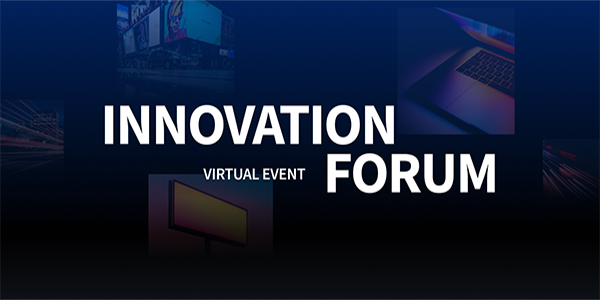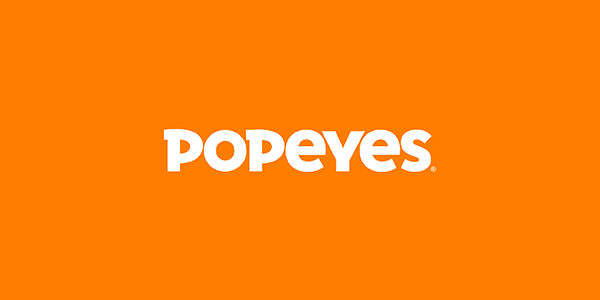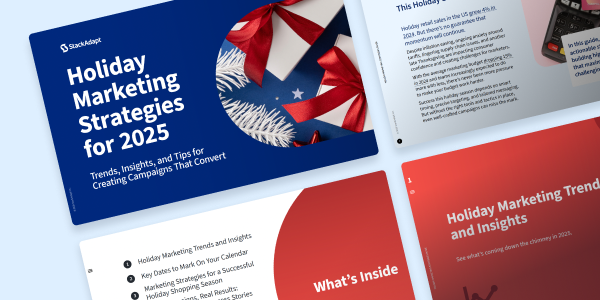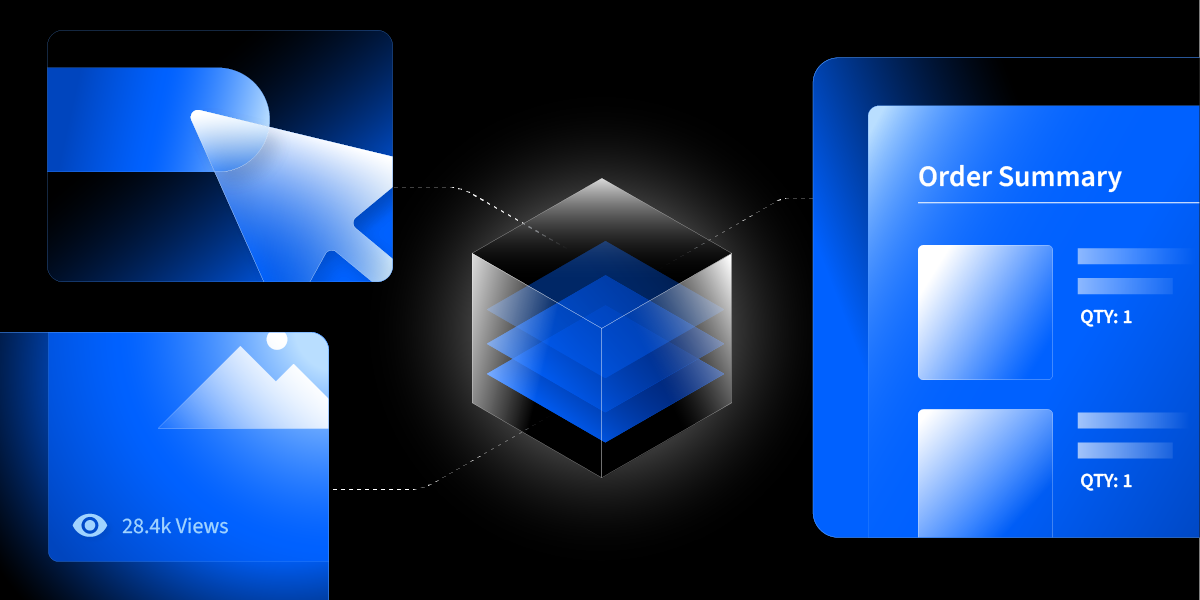The Main Benefits of Using Programmatic Advertising

Although digital advertising has existed since the early ‘90s, programmatic advertising—the automated buying and selling of digital ad space—unofficially began in 2013 with the introduction of Google AdSense.
Back then, options were limited, with advertisers primarily relying on display advertising and basic keyword targeting to reach the right audience and drive campaign performance.
Within a few short years, other programmatic platforms would enter the mix, allowing advertisers and publishers to buy and sell ad inventory across multiple channels, including video, native, connected TV(CTV), audio, in-game, and digital out-of-home (DOOH)—transforming programmatic advertising from a niche solution to the go-to method marketers use for delivering targeted multi-channel campaigns at scale.
As a result, interest in programmatic advertising continues rising. In 2024, global programmatic ad spend reached an estimated $595 billion USD, with the US leading the way in spending, followed by China ($157.5 billion) and the UK ($41.7 billion). And it’s set to go even higher, with global programmatic ad spend—propelled by emerging channels like CTV and retail media—projected to reach an estimated $800 billion USD by 2028.
If you’re new to the programmatic space, read on to learn the benefits of programmatic advertising, why it’s an essential tool in modern marketing, and how to use it to build brand awareness and convert customers.
How Does Programmatic Advertising Fit Into Your Digital Marketing Strategy
Before we get into the benefits of programmatic advertising, let’s briefly go over how it fits into the modern marketing strategy.
These days, marketers rely on an increasing number of strategies and channels—from SEO and content marketing to social media and email marketing—to engage audiences and drive results. But doing it effectively and at scale has never been more difficult.
That’s where programmatic advertising comes in.
Programmatic advertising provides unparalleled precision, scalability, and efficiency—allowing marketers to target the right audience on the right platform at the right time—and it complements and enhances other marketing efforts.
Programmatic advertising can boost traffic through highly targeted paid campaigns, distribute content to the most relevant audiences, and retarget users who have previously engaged with your brand. It ensures consistent messaging across multiple touchpoints and enhances marketing efforts throughout the customer journey, from awareness to conversion.
How Programmatic Advertising Works
To understand the benefits of programmatic advertising, it helps to know how it works. Here’s a basic step-by-step overview of the whole process—from planning to delivery—in a programmatic auction:
Step 1: Campaign Setup
Let’s say an advertiser wants to promote a new product or service. First, they choose a specific goal for their programmatic campaign—such as increasing brand awareness, driving traffic, or maximizing conversions—and use a demand-side platform (DSP) to create and manage the ad campaign.
Step 2: Initial User Interaction
Although the process differs depending on the channel, let’s use programmatic display advertising as an example. First, a user visits a website. Then, a supply-side platform (SSP) that manages ad inventory for the website identifies the opportunity and notifies an ad exchange that an impression is available for auction.
Step 3: The Auction Initiates
The ad exchange acts as a digital marketplace, sending bid requests to DSPs like StackAdapt. This request includes pseudonymized details about the user and information on the available ad space (such as the type of content that appears on the page and the ad’s dimensions).
Step 4: The Bidding Process Begins
The DSP uses machine learning to evaluate the impression’s value based on the campaign parameters and places a bid. It considers factors like the advertiser’s target audience, budget, and campaign goals to determine how much to bid for the impression.
Step 5: The Ad is Served
After that, the ad exchange collects all the bids and determines the highest bidder. The winning DSP gets notified, and the ad creative gets displayed to the user on the publisher’s website. The whole process happens within a fraction of a second.
Main Benefits of Programmatic Advertising
Programmatic advertising gives advertisers access to more inventory, targeting options, and insights than traditional forms of digital advertising, helping advertisers optimize campaigns and get a better return on investment (ROI) for their ad spend.
Here are six of the major benefits of programmatic advertising:
- Efficiency: Instead of manually negotiating ad placements or setting up campaigns on multiple platforms, advertisers can automate the ad-buying process across various channels, devices, and formats, often from a single platform.
- Cost-Effectiveness: With programmatic advertising, advertisers don’t have to break the bank to access premium inventory. Even small to mid-sized businesses and brands can compete with major companies.
- Flexibility: Unlike other forms of traditional advertising, advertisers can easily adjust targeting parameters, swap out creatives, and scale their campaigns up and down based on how campaigns are performing or make any changes, even if campaigns are in flight.
- Reach: Programmatic advertising allows advertisers to reach a massive audience by serving ads on thousands of websites, apps, and streaming services. For example, with StackAdapt, advertisers can access premium CTV inventory and target users watching content across a variety of streaming platforms.
- Targeting: You don’t have to cast a wide net to get results with programmatic. Advertisers can get super granular with their campaigns and target users based on their demographics, interests, behaviours, and even what they’re reading about online, helping you or your client reach users who are more likely to care about your offering and convert.
- Transparency: Advertisers can choose where their ads get placed, see how they’ll appear online, track how much they’re spending, and know who’s viewing their ads, helping them optimize their campaigns to deliver better results.
Advantages of Real-Time Bidding and Automation
One of the benefits of programmatic advertising is how ad space is purchased.
There are two main ways that advertisers purchase programmatic ad inventory: programmatic direct and real-time bidding (RTB).
With programmatic direct, inventory is negotiated between a buyer and a seller, but ad placement and delivery remain automated through programmatic technology. Advertisers secure inventory either by purchasing a fixed number of guaranteed impressions at a set price (programmatic guaranteed) or by gaining priority access to premium inventory at a negotiated price (preferred deal).
With RTB, advertisers bid on ad space in real time through an auction system, either through a private marketplace (PMP), where select advertisers can bid on curated premium inventory from specific publishers, or an open exchange, where ad space is available to all buyers in a competitive auction.
Both have their benefits. While programmatic direct typically provides guaranteed ad placements, access to premium inventory, and greater control over where ads appear, RTB offers more scalability, cost efficiency, and dynamic pricing based on real-time market demand, making it ideal for advertisers looking to scale campaigns across a wide range of inventory at a competitive price.
Measuring Performance and ROI With Programmatic Advertising
Data is at the core of programmatic advertising. Unlike traditional forms of advertising, which often rely on panel-based metrics and vague estimates, brands and agencies can track performance with more precision and make real-time, data-informed optimizations that improve ROI.
With programmatic, every impression, click, and conversion gets recorded, giving advertisers full visibility into their campaigns’ performance. Instead of waiting until the end of a campaign to analyze results, advertisers can use up-to-date insights to adjust bids, targeting parameters, and creative variations mid-flight, helping brands allocate their budgets more effectively and ensuring they reach the right audience while minimizing wasted ad spend.
But it doesn’t only apply to online sales. Advertisers can use brand lift studies to gauge brand awareness, ad recall, and consumer sentiment more accurately or use footfall attribution to understand their digital ads’ impact on driving customers in-store.
The Emergence of AI and Machine Learning in Programmatic Advertising
Although AI and machine learning may seem like relatively new advancements to the average person, they’ve been core components of programmatic advertising since its early days, automating everything from bid optimization and pacing to audience segmentation and fraud detection.
As we’ve previously written, AI’s biggest strength lies in its ability to analyze vast amounts of data, uncovering patterns and insights previously difficult to detect. For example, StackAdapt’s AI-powered algorithm makes 143 billion decisions per second to determine which impressions get bid on.
However, two areas in which AI and machine learning have the biggest impact on programmatic advertising are targeting and personalization.
With AI, not only can advertisers target audiences who are more likely to convert based on personal preferences, previous consumer behaviour (like past purchases or website interactions), historical campaign performance, and predictive analytics, but also use contextual targeting—like StackAdapt’s Page Context AI—to identify the best ad placements based on the content their ideal audience is probably consuming.
Meanwhile, tools like dynamic creative optimization are helping to hyper-personalize messages to the end user at scale.
In the past, agencies would A/B test ad creatives and rely on gut instinct and historical performance to try and determine which ads would perform the best.
Now, as AdExchanger reports, machine learning can use behavioural, demographic, psychographic, and other consumer data to generate and test hundreds (if not thousands) of creative variations—using generative AI to create countless headlines, images, and even videos—that are personalized to individual users, allowing marketers to test creatives quickly and iterate based on performance.
Examples of Programmatic Advertising In Action
Now that we’ve gone over the benefits of programmatic advertising, here are some real-world examples of how StackAdapt clients have used programmatic advertising to drive success for their businesses or brands.
- Eko—a healthcare technology company—used native and display advertising to boost brand awareness and conversions, generating 26M+ impressions and achieving a 290% return on ad spend.
- Allianz, an international financial services company specializing in car insurance, used programmatic advertising to optimize lead generation, reducing customer acquisition costs by 83%.
- UK agency Digital Willow used DOOH at some of Europe’s busiest airports to grow awareness about the Isle of Man, increasing click volume for a search term related to the travel destination by 263%.
- Ledger Bennett leveraged ABM targeting, the StackAdapt Creative Studio, and a multi-channel retargeting strategy as part of a B2B campaign for their client, General Electric, increasing engagement 107% above the industry average.
- Add3Connect used CTV to boost ad recall by 18.7% for their client, the health-focused CPG brand Nuun, and used an in-platform brand lift study to prove their campaign results.
- OPR media worked with StackAdapt to drive 15K+ customers in-store and increase conversions online and offline for a world-renowned perfume brand.
How to Level Up Your Programmatic Advertising
Before you start launching campaigns, here are some best practices to keep in mind that will help you get the most out of your ad budget:
- Set Clear Campaign Goals: Know your objectives—whether it’s increasing brand awareness, generating leads, or driving sales—and set clear KPIs to measure your success.
- Target the Right Audience: Define your target audience based on their demographics, interests, and behaviours, and continuously refine your audience segments to ensure you reach the most relevant users.
- Test Your Creatives: Experiment with different ad formats, visuals, messages, and calls to action to find which ones perform the best. Use AI to speed up the process and test different variations.
- Use a Multi-Channel Approach: Use a variety of channels to connect with potential customers across different touchpoints and help move them through the funnel toward conversion.
- Monitor and Optimize Your Campaigns: Keep track of results and make adjustments—even while campaigns are running—to maximize performance.
How Programmatic Advertising Primes Your Business for the Future
Despite existing for over a decade, programmatic advertising continues to experience double-digit growth thanks to innovations and emerging categories like retail media and CTV.
With EMARKETER reporting that $9.56 billion USD ad dollars are expected to migrate from traditional ad spending channels in 2025 and 2026 to programmatic advertising, it’s clear that programmatic platforms like StackAdapt are lowering the barrier to entry by providing access to premium inventory, advanced targeting capabilities, and real-time performance insights, all from a single platform.
If you want to learn more about the power of programmatic advertising, download our guide or speak with our team.







